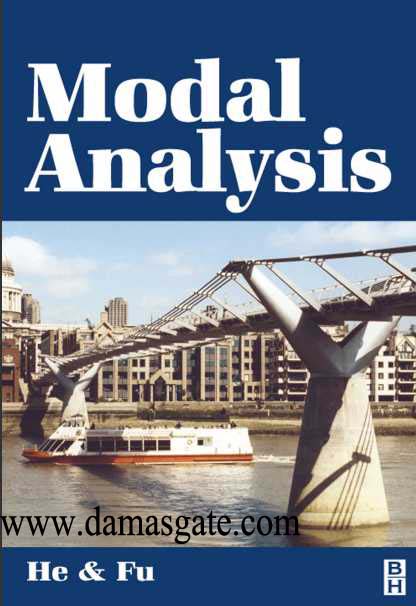Modal Analysis
This book provides a detailed treatment of the theory of analytical and experimental
modal analysis with applications. It is intended for several uses. The materials can be
selectively used for undergraduate and postgraduate courses. The book can be a
reference text for practising engineers whose work involves modal analysis, and for
researchers in other engineering and science disciplines who use modal analysis as a
tool in their research.

Preface
Though appearing to be specialized, modal analysis has been used in the last two
to three decades in many engineering disciplines and technology fields to solve
increasingly demanding structural dynamic problems. The path of modal analysis
being incorporated into university teaching is paralleled with that taken by finite
element analysis. Currently, the published literature in modal analysis is sparse without
taking on board conference and journal papers. This is not conducive to users of this
technology.
Chapter 1 of this book begins with a brief introduction to the current status of
modal analysis in engineering fields and the practical background which gave rise to
modal analysis as an effective and an advancing technology. This is followed by a
concise clarification of modal analysis and modal testing, and the theoretical framework
for modal analysis. It is succeeded by an outline of applications of modal analysis in
dealing with different types of engineering problems and practical challenges. This
chapter closes on a summary note on the historical development of modal analysis.
Chapter 2 reviews the mathematics tools used in the theory of modal analysis. In
matrix theory, these include matrix inversion, linear simultaneous equations, eigenvalue
problems, different decomposition of a real symmetrical matrix, matrix perturbation
and the derivative of matrices. In addition, this chapter introduces poles and zeros of
a polynomial function, Fourier series and transform, and the variable separation
method for partial differential equations. These mathematics tools will be used in the
following chapters of the book.
Chapter 3 reviews the basic vibration theory which forms the basis of modal
analysis theory. This chapter is an epitome of a textbook for mechanical vibrations or
dynamics of machines. It intends to review relevant materials rather than to offer a
comprehensive coverage of vibration theory. This is to facilitate a more thorough and
smooth excursion in modal analysis theory.
Chapters 4, 5 and 6 constitute the theoretical basis of modal analysis. In Chapter
4, modal analysis theory for an SDoF system is presented. It begins with the frequency
response function (FRF) of an SDoF system, its concept and its different forms and
various formats on which the FRF can be studied. This is followed by an in-depth
Download
*